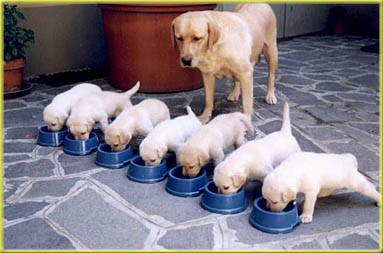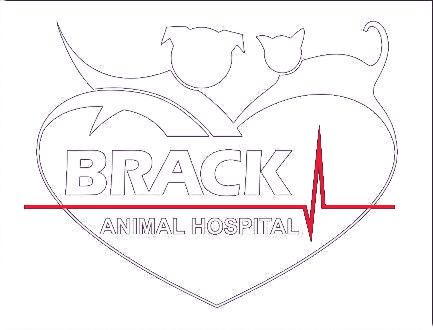
I thought I could compare pet foods by comparing labels. Based on the “Guaranteed Analysis” and ingredient list, it appears to me that diets available through veterinary hospitals are essentially the same as pet food sold elsewhere.
You are absolutely right – it appears to be so! The “Guaranteed Analysis” is a quantitative analysis performed in a laboratory, however, it tells us nothing about ingredient quality. Shoe leather, hair, feathers, beaks, and chicken feet would be high in crude protein, but provide poor nutrient value for your pet. There are many different quality classifications (grades) of ingredients. An excellent example is poultry meal, a common ingredient. The cost of top grade (chicken meal) is significantly higher than the cost of regular poultry meal – and the digestibility and nutrients provided to your pet significantly better. You cannot determine the quality of an ingredient based solely on label information.
If I can’t compare food based on labels, how can I decide what’s best for my pet?
Talk to us! Nutrition is an important part of keeping your pet as healthy as possible. We can recommend what is most appropriate for your individual pet. To best evaluate the diet we have recommended, it needs to be fed for about 8 weeks. Transition your pet slowly onto the diet (over a week or so), and note how much your pet enjoys each meal. Measure the amount of food carefully, and be prepared to adjust the amount the amount fed over 3 to 4 weeks (high quality = reduced quantity of food required).
I’ve heard that the first ingredient in a diet should be meat – that this indicates a higher quality of diet. Is this true?
Not necessarily! Quality protein sources can have a significant benefit over quantity. Ingredients are listed in order of decreasing weight (prior to processing). So, for example, whole chicken may be first on the list, but that is by weight – and 70% of that weight is water, which evaporates in the cooking process for dry diets. In addition, the breakdown of the product groups can be misleading, i.e. corn starch, zea mays, corn bran, corn gluten, and corn. They might all be added as separate weights, lowering their order in the ingredient list. However, if you added them up (they’re all corn) they would rise to the top of the ingredient list. Be careful about falling into the “more is better” trap. Higher amounts of poor quality proteins are not as beneficial to your pet as the appropriate amounts of high quality protein. Additionally, several different protein sources may actually result in a better variety of amino acids for your pet’s benefit. The diets we recommend focus on nutrient delivery, not simply ingredients.
What about corn? I’ve heard that I should stay away from diets with corn as a first ingredient.
This a misperception. High-quality corn, properly cooked, provides a digestibility greater than 80%, while lower grade corn will be significantly less digestible. Corn is an excellent carbohydrate (energy) source in dry diets and helps form the kibble. What is important is the combination of high quality ingredients that make up the total diet.
Why do veterinarians offer specific diets?
Veterinarians used to mainly treat disease. Now, our approach focuses much more on health care, a total approach which includes veterinary care, exercise, and nutrition. Nutrition plays a key role in our approach. It is our responsibility to assure our clients that the diets we recommend are extensively researched and monitored, incorporate unique ingredients and are of exceptional quality. It is entirely probable that your pet may eat 6 or 7 different diets over the course of his or her lifetime to best address their different life stages and health needs. It is our goal to pro-actively address these changes and needs to help your pet achieve his or her peak potential.
What about price? Diets available through veterinary hospitals seem to be significantly higher in cost than other pet foods I can buy.
We know it can certainly look that way. Veterinary diets use high quality ingredients which provide exceptional nutrition. Typically, you will feed a smaller amount of food and your bag of veterinary diet will last longer, making the cost per day to feed your pet a high quality veterinary diet comparable to a grocery store brand. In most cases, you can feed your pets exceptional diets at a daily cost equivalent to a cup of coffee or a bottle of water.
Many commercially available cat foods now advertise that they will help prevent urinary tract problems. Why wouldn’t I use one of those?
Feline Lower Urinary Tract Disease (FLUTD) continues to be a concern for cats. We now know, through ongoing research efforts, that FLUTD is not a simple disease caused by a singular factor, such as ash content. There are a number of disorders that make up this complex disease, including idiopathic cystitis (in 70% of cats with FLUTD), bacterial infections, and crystals and stones (struvite, oxalate, etc.). It is increasingly important that we make dietary recommendations and changes on an individual cat basis. Physical exam findings, laboratory results, environmental considerations, age of cat, and body condition all impact diet choice.
What about raw food?
Raw foods (particularly meat and eggs) are not recommended. Food poisoning, parasitic infections, and nutrient deficiencies are all potential outcomes of feeding raw food. Many of the microorganisms present in raw meat can be passed on to people. These present a real hazard to the health of your family. Bones, both raw and cooked, are not safe for your pet. They can damage teeth and cause obstruction in the mouth, throat, stomach, and gastrointestinal tract in both dogs and cats. A raw food diet can result in improper bone development, where normal growth is not supported. The outcome can be pain, compromised mobility, and poor quality of life. There are simply too many risks associated with raw diets for us to support their use.
Why choose dry vs. canned, and what about flavours?
Dry diets are more economical and are easier to store and keep fresh. Canned diets tend to be more palatable for the fussy eater. We may recommend canned diets to help increase water intake for pets with certain medical conditions. Combining a little bit of canned food with some dry food is a popular way to feed pets. Most pets, once accustomed to and thriving on an excellent diet, do not require change.
Are organic or natural foods safer?
Not necessarily. “Natural” is defined under AAFCO as “any ingredient which has not been chemically altered”. However, even added vitamins and minerals, which are essential to a balanced diet, would result in the diet no longer being “natural”. Organic food regulations are very vague at this time. The term “organic” may be put on the label even if only one ingredient is certified organic. “Natural” or organic ingredients could still be subject to bacterial contamination or mycotoxins produced by moulds and yeasts. This has been documented numerous times particularly in human foods (e.g. carrot juice, tomatoes, strawberries, beans, peppers, etc.).
